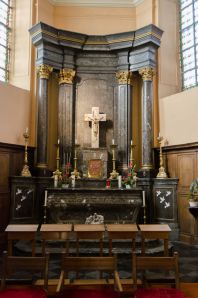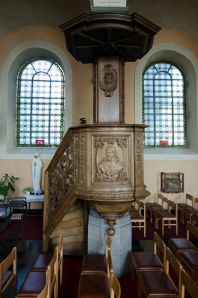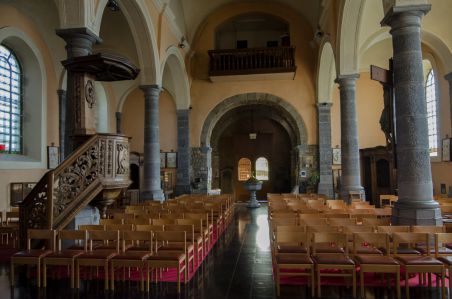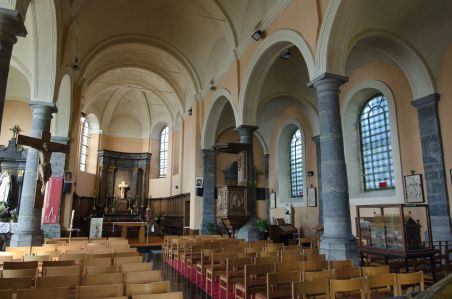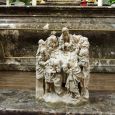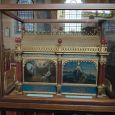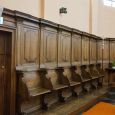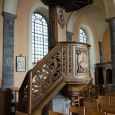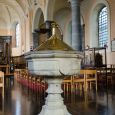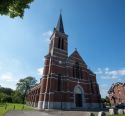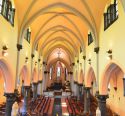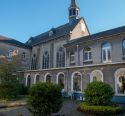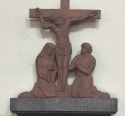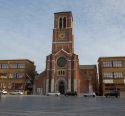Church | 1711 | Romanesque | Catholic Church


Map
Opening hours
01 January - 31 December
Mon 8.00 - 15.00
Tue 8.00 - 15.00
Wed 8.00 - 15.00
Thu 8.00 - 15.00
Fri 8.00 - 15.00
Sat 8.00 - 15.00
Sun 9.00 - 12.00
Guided tour
Religious offices
Thursday 6 pm
Sunday 10.30 am
Description
This building with its rural appearance was built of brick and stone in 1769. The tower of the building is of much older origin. Its base of rubble dates from the 11th century.
Inside are two painted reliquaries, those of Saint Ursula (1624) and of Saint Frederick (1620). They are small works of art whose sides have been enhanced by beautiful miniatures showing the life of the saints.
These reliquaries came from the ancient Abbey Saint Feuillien du Roeux and were sheltered here on the arrival of French Revolutionary troops.
Another quality ornament is the ancient Christ in wood in the Gothic style of Hainaut.
The surroundings of the church are green and pleasant as it dominates a natural reserve of ponds which shelter interesting flora and fauna.
KIKIRPA : Photo-library online
Photos
Remarkable elements
Reredos
Relief " The Last Supper ", fragment, taken from an old altarpiece from the first half of the 16th century. Stone with traces of polychrome.
Christ on the cross
This Christ on the cross in oak from the 18th century in Gothic style. It was painted and then cleaned.
Two painted reliquaries
These two painted reliquaries, very rare in Renaissance style, come from the old abbey of Saint-Feuillien in Le Roeulx and were placed in isolation here on the occasion of the arrival of the troops of the French Revolution. They are said to date from the 17th century and were restored in the 19th century.
The relic of Saint Frederic dates from 1620. It contains six painted panels representing five different saints who belonged to the order of the Fathers premonstratensians, and also Saint Augustine who is at the basis of the rule of these religious.
The relic of Saint Ursula dates from 1624 and depicts the figures of Saint Lucia, Saint Barbara, Saint Catherine and two panels of Saint Ursula.
Translated with www.DeepL.com/Translator
Choir stalls
The twelve oak choir stalls from the 18th century were placed on both sides of the choir after the French Revolution. They may have belonged to the abbey of Saint-Feuillien of Le Roeulx.
Pulpit
Oak pulpit from the 18th century and in Louis XV style. On the cupboard, the panels represent the busts of Christ, the Virgin and Saint Martin. The back of the chair shows the face of an angel.
Baptismal font
The fonts from the 16th century are in octagonal form, with a stone base in all blue coal containing limestone from the Gothic period. The lid is in copper.




